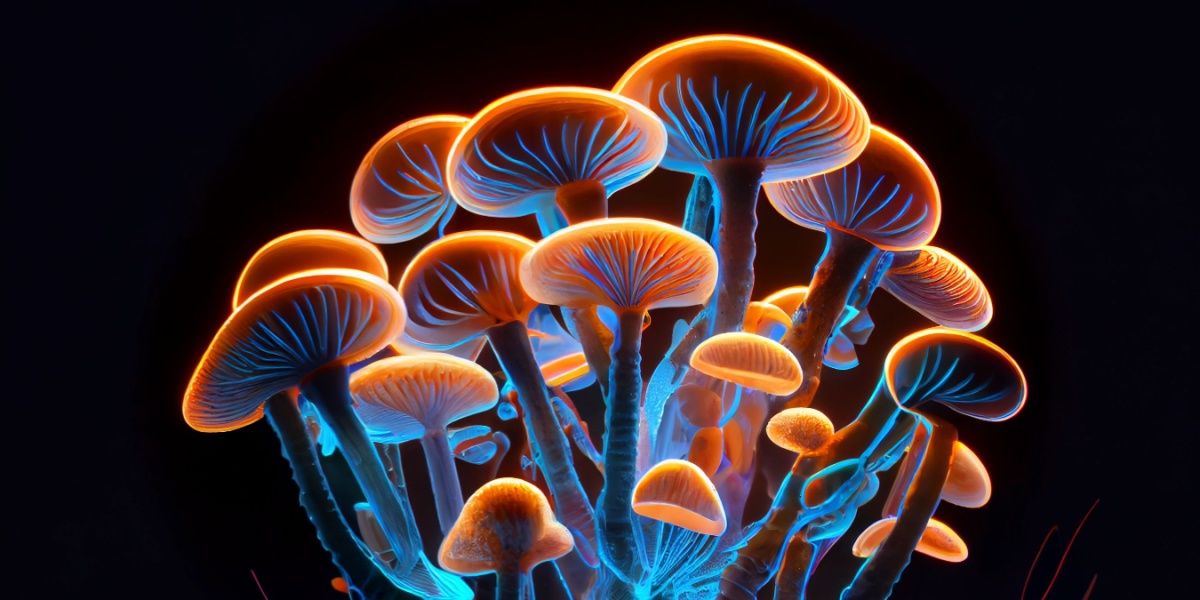In northern Mexico and the U.S. Southwest, a small cactus—peyote (Lophophora williamsii)—has anchored ceremonies for centuries because mescaline can prompt visionary experiences. [1] Many communities regard peyote and similar plants as sacred ways of reaching the divine. [2] Still, natural does not automatically mean safe; misuse can involve toxicity, addiction, and serious legal repercussions.
- Many psychoactive plants (e.g., peyote, ayahuasca, coca) have long histories of ritual or medicinal use but are now also used recreationally.
- The mind-altering effects come from plant alkaloids that interact with brain receptors to induce hallucinations, euphoria, stimulation, or sedation.
- Even “natural” hallucinogens and stimulants can be toxic or addictive; misuse may lead to delirium, overdose, or dependence, requiring emergency care or professional help in some instances.

Ethnobotany meets alkaloid power: How these plants work
Psychoactive plants alter the nervous system because they produce alkaloids and other compounds that bind directly to brain receptors. These molecules evolved as plant defenses, but they are close enough in structure to human neurotransmitters that they can disrupt or mimic normal signaling. [3]
In peyote, mescaline binds to serotonin receptors, which helps explain the strong visuals and warped sense of time that people report. [1] By contrast, tropane alkaloids (like atropine and scopolamine, which are present in datura and belladonna) block acetylcholine receptors and can cause delirium, disorientation, and lifelike hallucinations. [4]
Stimulant plants work differently. Cathinone in khat and cocaine in coca leaves increase dopamine and norepinephrine activity, producing alertness, bursts of energy, and euphoria—but also raising heart rate and blood pressure. [5] Sedative plants (like the opium poppy) contain morphine and codeine, which bind to opioid receptors to relieve pain and induce calm. Yet at higher doses, they can slow breathing to dangerous levels. [6]
Not all plants work the same way. Salvia divinorum contains salvinorin A, which targets kappa-opioid—not serotonin—receptors, leading to a short, dissociative experience unlike typical psychedelics. [1]
Different types of psychoactive plants and their effects
Psychoactive plants are commonly grouped by their dominant effects:
- Hallucinogens (alter perception)
- Deliriants (create toxic confusion)
- Stimulants (increase alertness)
- Sedatives/euphorics (promote calm and pleasure)
- Mixed-effect plants
1. Hallucinogens
- Peyote: Containing mescaline, peyote produces visual hallucinations and altered time perception. While it is not physically addictive, experiences can be overwhelming. [1]
- Ayahuasca: This is an Amazonian mixture of dimethyltriptamine sources and β-carbolines, and it often brings extended visions and vomiting. While not physically addictive, it can trigger anxiety or other complex reactions. [6]
- Salvia divinorum: Salvia divinorum is a leaf material that carries salvinorin A, inducing a short, powerful dissociative state. The effects are markedly disorienting, but it does not cause withdrawal. [1]
2. Deliriants
- Jimson weed (Datura stramonium): Its tropane alkaloids (atropine, scopolamine) cause anticholinergic delirium, with realistic hallucinations, amnesia, and severe confusion. It is not addictive—the main danger is poisoning, which can be fatal. [4]
- Deadly nightshade (Atropa belladonna): The alkaloids of this highly toxic nightshade cause delirium, hallucinations, and disruption of automatic body functions, such as heart rate and breathing. It has no addiction potential—the primary risk is poisoning. [3]
- Mandrake (Mandragora spp.): This nightshade root contains scopolamine and hyoscyamine, producing sedative and hallucinogenic effects but with a very narrow safety margin. It has no addiction potential—the main danger is its high toxicity. [3]
- Henbane (Hyoscyamus niger): This nightshade herb contains tropane alkaloids that cause delirium, hallucinations, and agitation, with seizures possible at higher doses. It has no addiction potential—the primary risk is severe toxicity. [4]
3. Stimulants
- Khat (Catha edulis): The fresh leaves contain cathinone and cathine, which act as stimulants. It causes mild euphoria, alertness, and talkativeness. The addiction potential is moderate—habitual use can cause dependence, insomnia, appetite loss, and hypertension. [7]
- Coca leaf (Erythroxylum coca): When chewed traditionally in the Andes, coca leaves release low doses of cocaine that provide energy, reduce hunger, and increase stamina. Dependence on leaf chewing appears uncommon, though it can occur with frequent or heavy use. By contrast, refined cocaine has an exceptionally high addiction potential with serious risks to the heart and brain. [1][8]
4. Sedatives or euphorics
- Kratom/Mitragyna speciosa: Has dose-dependent effects. At low doses, kratom acts as a stimulant, while at higher doses it produces analgesia and sedation. The addiction potential for kratom is significant. Frequent or high-dose use can cause dependence and withdrawal (irritability, insomnia, muscle aches). [9]
- Poppy plant derivatives (Papaver somniferum): The latex of the opium poppy contains morphine and codeine, which act on opioid receptors to relieve pain, while also causing euphoria and drowsiness. The addiction potential is very high—tolerance and dependence develop quickly, and overdose can cause fatal respiratory depression. [10]
5. Mixed effects plants
- Iboga (Tabernanthe iboga): The root bark’s ibogaine is a stimulant in small doses and a hallucinogen in larger ones. It is not typically addictive, but severe toxicity (such as heart arrhythmias) makes unsupervised use dangerous. [6]
Cultural and traditional use vs. Recreational use
Many Indigenous communities use these plants in ceremonies. In the Amazon, shamans lead ayahuasca rites. In Mexico, the Huichol gather peyote as a sacrament. [4] Elders guide the rituals. [2]
Outside of those cultural frameworks, recreational use lacks these safeguards. Tourists or thrill-seekers who casually ingest hallucinogens or deliriants may misunderstand proper dosage or underestimate the importance of set and setting. The ease of global access (e.g., buying psychoactive plant products online) lets more people experiment without guidance [6], raising the risk of accidents and mental health crises.
Dangers of toxicity and overdose
These plants may be natural, but their effects can be toxic or even fatal. Tropane-containing plants (datura, belladonna, henbane) can cause anticholinergic poisoning, marked by: [11][12]
- Fever
- Rapid heartbeat (tachycardia)
- Delirium
- Seizures
- Coma
Even small amounts, like a few datura seeds, may contain lethal atropine levels requiring immediate medical help. [12]
Stimulants may cause heart attacks, strokes, or psychosis when misused. Similarly, opioid-rich plants (like opium poppies) can dangerously depress breathing, potentially causing death from overdose. [1] For suspected poisonings or overdoses, immediate emergency care is critical—call Poison Control (1-800-222-1222) or emergency services (911). [1][12]
Legal status and access
U.S. law lists mescaline, DMT, psilocybin, ibogaine, and cathinone as Schedule I substances; cocaine and morphine are Schedule II due to restricted medical applications alongside high abuse potential. [13]
Salvia divinorum and salvinorin A remain unscheduled federally, though the DEA lists them as “drugs of concern,” and many states impose bans or restrictions. [14] Kratom remains federally unscheduled in the U.S.; however, in July 2025, the FDA recommended placing concentrated 7-hydroxymitragynine products—high-potency kratom extracts—under Schedule I control due to their significant addiction risk. The FDA clarified that traditional kratom leaves and teas are exempt from this scheduling recommendation.[15]
Some exemptions do exist, like the right of members of the Native American Church (NAC) to use peyote ceremonially [4] without facing legal consequences. However, internationally, rules are inconsistent. Coca leaf chewing, for example, is permitted in parts of the Andes but prohibited in the U.S [8]
Prevention and professional support
Harm reduction strategies should be employed by those who choose to use natural hallucinogens.
If someone develops problematic use—such as relying on kratom or coca daily, showing withdrawal symptoms, or experiencing lasting psychological effects after a hallucinogen—professional help is needed. Addiction specialists can offer treatment programs, medical detox, or counseling. In the U.S., the SAMHSA National Helpline (1-800-662-HELP) is available 24/7 for confidential support and referrals.
In the end, prevention means respecting how powerful these plants are, and support means knowing when to reach for help.

-person-thumbnail.jpg?v=1758880627)

